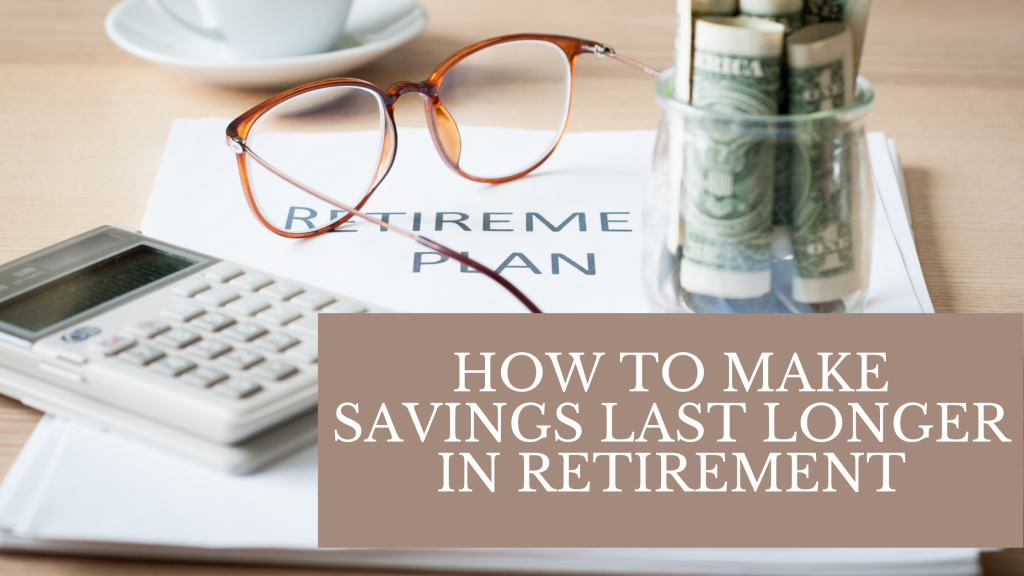
How to Make Savings Last Longer in Retirement
Whether you dream of a travel-filled retirement or would prefer to relax and enjoy spending more time at home, you’re probably wondering what you can do to make your golden years as stress-free as possible. For many who have spent the last several decades in wealth-accumulation mode, withdrawing savings can trigger anxieties about the future. Some of the choices you make during the earliest years of retirement can significantly reduce—or accelerate—the speed with which you spend down your retirement savings.
Moving to a State with No (or Low) Income Taxes
As of 2020, seven states do not levy an individual income tax—Texas, Florida, Nevada, Alaska, Washington State, Wyoming, and South Dakota.1 Retiring in one of these states can save you up to 13 percent on each 401(k) or IRA withdrawal you make. There are certainly trade-offs to this approach, as low-income-tax states tend to have higher property taxes or fewer public services than high-tax areas; however, for those looking to preserve their nest egg, it’s worth looking into.
In some cases, it can make sense to plan a move to a no-tax state shortly before you begin taking required minimum distributions (RMDs), as these RMDs will then be subject only to federal income taxes. And even if you’d prefer not to uproot your life to live in a new state year-round, you may want to investigate your options to see how many nights a year you’d need to spend in a no-tax state to claim residency.
Deciding When to Take Social Security Benefits
Another important factor in preserving your retirement savings involves when to take Social Security benefits. The earlier you claim, the less you’ll receive per month; waiting until age 70 to claim can mean maximizing your benefits.
But while it may seem sensible to put off Social Security so that your total benefit is as large as possible, this isn’t necessarily the best approach. Taking Social Security early can reduce the amount you’ll need to withdraw from retirement accounts, helping these funds continue to grow until your RMDs begin at age 70. It may also make sense to take early Social Security if you have health problems that could potentially shorten your life.
A financial professional can help you run a range of scenarios to get a better idea of when it makes sense for you to claim Social Security. As with so much about personal finance, there’s no “one-size-fits-all” answer here.
Evaluating Guaranteed Income Products
Social Security benefits are one form of guaranteed income. But because these benefits cap out at around $3,790 (for the highest earners who claim at 70), they may not be enough to support a previously high-income household.2
Guaranteed income products like annuities can help fill these gaps, providing a monthly source of income to help you maintain your pre-retirement lifestyle as much as possible. And though no investment product is truly risk-free, annuities can be much less risky than investments like stocks or even bonds.
Important Disclosures:
The opinions voiced in this material are for general information only and are not intended to provide specific advice or recommendations for any individual. To determine which investment(s) may be appropriate for you, consult your financial professional prior to investing. All performance referenced is historical and is no guarantee of future results. All indices are unmanaged and cannot be invested into directly.
The information provided is not intended to be a substitute for specific individualized tax planning or legal advice. We suggest that you consult with a qualified tax or legal advisor.
LPL Financial Representatives offer access to Trust Services through The Private Trust Company N.A., an affiliate of LPL Financial.
Fixed and Variable annuities are suitable for long-term investing, such as retirement investing. Gains from tax-deferred investments are taxable as ordinary income upon withdrawal. Guarantees are based on the claims paying ability of the issuing company. Withdrawals made prior to age 59 ½ are subject to a 10% IRS penalty tax and surrender charges may apply. Variable annuities are subject to market risk and may lose value.
1 https://taxfoundation.org/state-individual-income-tax-rates-and-brackets-for-2020/
LPL tracking # 1-05017711